Crafting narratives with street photography.
Embrace this form of candid storytelling and take to the streets to start capturing snapshots of everyday life.
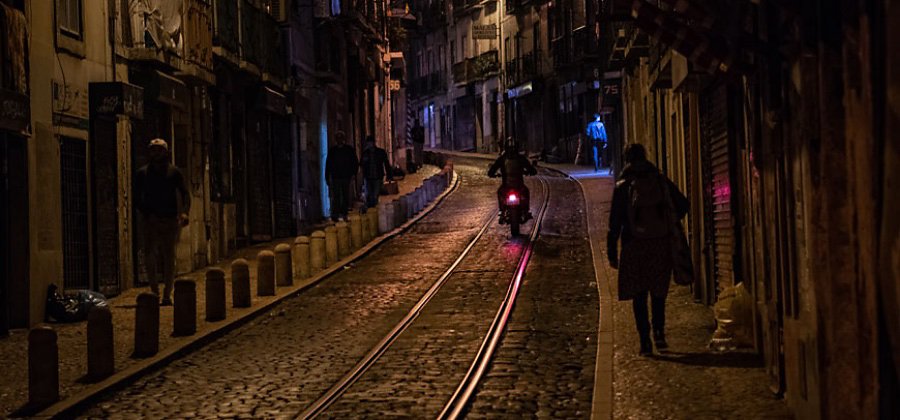
Photography by Steve Simon
What is street photography?
Street photography is a form of storytelling that communicates the experience of everyday life and the vision of the artist via photos shot out in the world. Like photojournalism, nothing is staged, posed or planned and it doesn’t rely on models or studio lights. “A lot of street photography is responding to life. It’s when you see an interaction or a person in a certain space and you want to record that,” explains photographer and professor Adam Long.
Since so much of the lighting, content and opportunity in street photography is dependant on chance, street photography can be a challenging genre of photography. But those challenges ensure that street photos are always one of a kind. “It’s all about learning to define and refine what you see in an interesting way,” photographer Anthony Pidgeon explains. It aims to document and examine life, as it happens. For beginners, it’s a wonderful way to hone your technical skills and develop your unique artistic perspective.
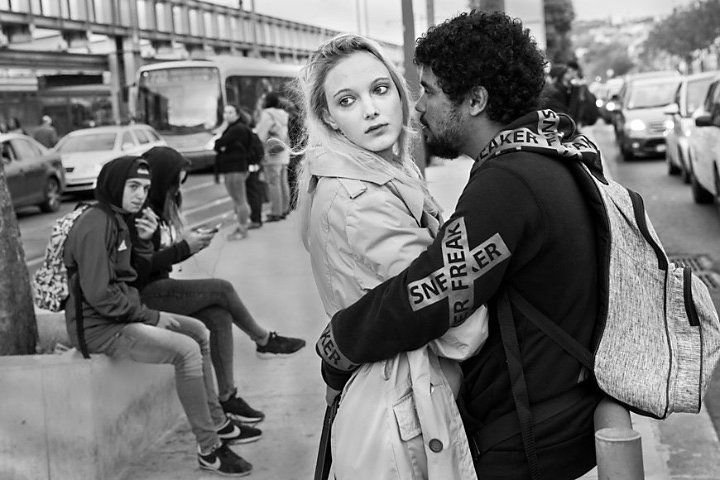
Photography by Steve Simon |
Mastering the decisive moment.
The famous street photographer Henri Cartier-Bresson coined the term “decisive moment.” This refers to photographing a moment or event that is spontaneous, where the image tells the story for itself. As a street photographer, you don’t control your environment, but you do control your camera. You decide the exact moment to snap that photo. The perfect decisive moment is where street photography becomes storytelling.
Composition and framing are what take a simple snapshot to the next level. “Sometimes you want to tell a story that’s actually happening in front of you. And then other times you see subjects and you want to create a story with that picture. Both are equally valid and both are street photography,” says photographer Derek Boyd. To create the best images, experiment with how you frame a photo, the angle you shoot from and the light you capture. This all serves to tell a story and it’s up to you as the artist to decide what that story is.
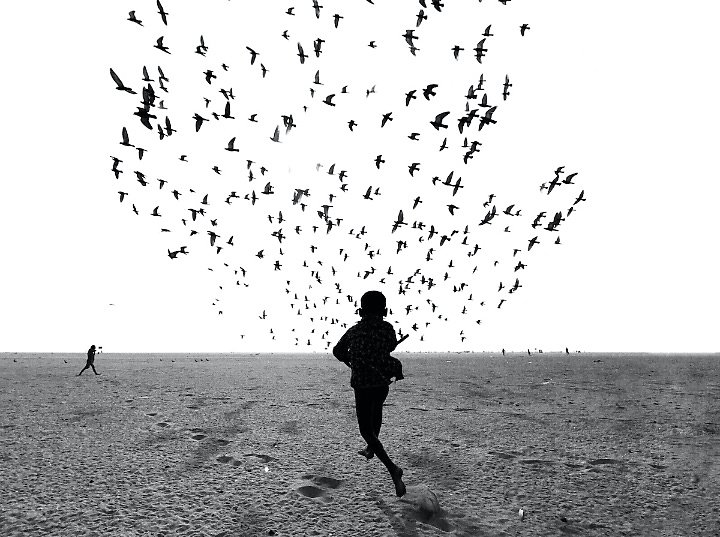
Photography by Dimpy Bhalotia |
Street photography tips to get you started.
Understand your camera settings.
With street photography, you have one chance to capture a specific photo. “A big part of it is mastering the technical side of things. It’s about seeing something cool and then quickly being able to translate that into an image,” explains Pidgeon. Light changes quickly when you’re outside, so it’s important to understand how shutter speed, aperture, ISO and focal length can be adjusted to get the right exposure.
Consider shooting in aperture priority mode. Setting your f-stop and knowing the shutter speed and ISO will automatically change to adjust for the light, allows you control over your depth of field. But don’t set your f-stop too high, as this puts you in danger of having a slow shutter speed and any unintentional movement of the camera can make your images blurry. Having some movement in your photo may be the style you’re looking for, but just make sure your choices are intentional.
Take only the gear you need when shooting in the street. If you’re carrying extra lenses and tripods, you’re much more noticeable and it will affect the photos you take. If you’re looking to capture snapshots of life as it happens, you don’t want to be distracting to the people around you. Packing light helps you to keep your images candid.
As is the case with landscape photography, if you’re walking for miles with your camera, carrying extra gear gets tiring. Pack what you need, like an extra storage card for your DSLR or digital camera and leave the rest at home.
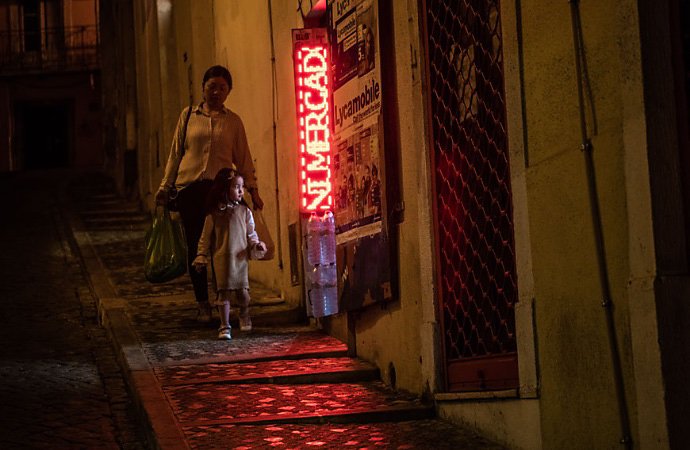
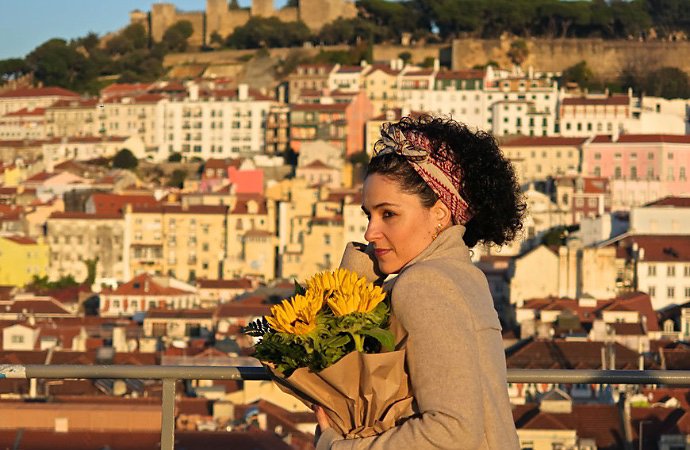
Photography by Steve Simon
Discover what inspires you.
Street photography is all about immersing yourself in a location, whether that’s a famous landmark or the lazy cadence of a mundane small town. “If there’s something I want to capture, I scout the location beforehand. How does this look on a cloudy day? How does it look on a sunny day? What about at night versus in the morning?” says Pidgeon. Finding locations and settings that inspire you will help you to take more interesting photographs.
Consider getting out of your comfort zone and tackling some street portraits too. Instead of just doing a “smash and grab photo, I like to talk to people and see what they’re up to that day. Then I might make a portrait of them,” says Long. When you’re out doing street photography, you can always capture candid photos of people out in the world from a distance, but don’t be afraid to break that barrier and attempt some quick and simple outdoor portraits.
While a lot of street photography is done in black and white, pioneers like Joel Meyerowitz pushed the use of colour photography. But, when shooting in the street, you have no control over the setting. If there are bright signs or distracting lights that you can’t avoid, don’t be afraid to shoot in color and then use Adobe Photoshop Lightroom to convert your images into black and white. Changing the format of your photos in post-production can help you to focus your viewer and highlight the story your image is telling. How you edit an image can complete your narrative or fine-tune a photo’s message.
Recognise the rules of the street.
“There’s a reasonable expectation that when you’re out in public, you’ll get photographed. Whether it’s by the camera on top of the street sign or at the ATM,” says Long. Taking photos of people and things in public places is completely legal, but “I think it’s really important to be respectful of people’s space. Because even though — technically — you can do it, not everybody wants their photo taken,” says Pidgeon. Street photography is all about capturing life, but make sure you do it in a respectful way. When you’re on private property, that’s another matter. If you’re shooting on private land or in someone’s yard, the rules are different. That’s when you need to ask permission before taking photos.
Find inspiration in stunning street photography.
Street photography may be new to you, but you’ve likely seen it before. Think of Humans of New York, for example. This collection of portraits and interviews exemplifies the storytelling nature of street photography. You’d probably also recognise the work of Walker Evans. He was a photojournalist tasked with documenting the reality of the Great Depression and his work is included in countless American history textbooks and photography books. If you’re looking for more inspiration, check out some of the following artists.


Photography by Dimpy Bhalotia
- Fan Ho’s historic street photography of Hong Kong in the 1950s and 1960s freezes time and shows us what life was like for everyday people at that specific time in that specific place.
- Take a look at Steve Simon’s street photos — he organises the chaos of urban landscapes within a single frame and captures an insightful moment that communicates a taste of reality.
- Leaving behind a career in fashion, Dimpy Bhalotia now passionately pursues street photography. She uses black and white to focus her lens on spontaneous scenes and transform them into fine art.
- Terence Pang explores the vivid colours of Chinese New Year celebrations in his range of street photos. By capturing images at a distinct time of year, he’s able to approach the decisive moment from a new perspective.
Street photography is a great way for artists to explore a new type of photography and storytelling. Capturing a snapshot of the world as it is can convey truth and reality. With these tips, you can explore this style of candid photography and tell stories with your photos. Plus, it doesn’t have to take a lot of time. If you keep your camera with you when you’re out and about, you’ll always be ready to capture those decisive moments.
Contributors
You might also be interested in…
Find your truth in fine art photography.
Follow your passions and explore the conceptual layers of creating artistic photos.
Introduction to black and white photography.
Learn to use black and white photography to hone photography skills and capture perfect photos.
Photojournalism tips for beginners.
Learn the basics of photographing newsworthy happenings with advice from pros.
The basics of candid photography.
Discover how to capture candid moments with advice and tips from the pros.



